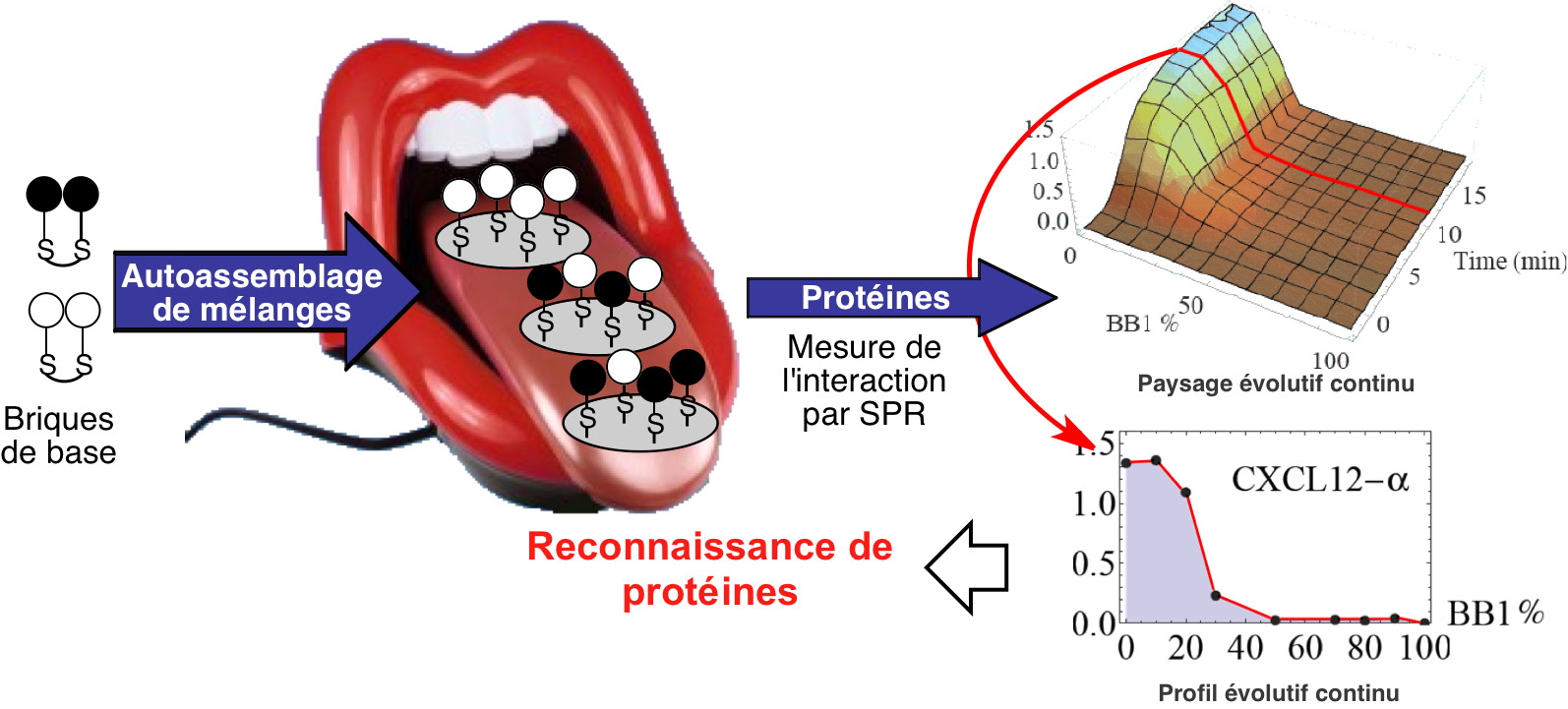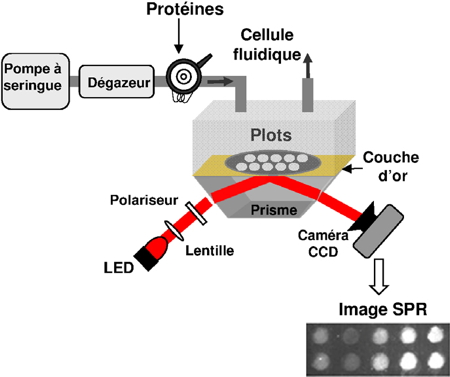In the same way that electronic noses are able to analyze gas (odors), electronic tongues are dedicated to analyses of samples in liquid with increasing applications in various domains including food and beverage industries, environment, and biomedicine. Inspired by the physiological processes of taste, these devices are multisensor systems comprising of different sensing elements, which are often laborious to produce. In collaboration with IBS and Université Paris-Sud, we have developed a novel approach which simplifies greatly the design and construction of the electronic tongues, inspired by the way that cell surface heparan sulfates (natural complex sugars) recognize proteins.
Instead of preparing a great number of different molecules as sensing elements as used for conventional electronic tongues, we have developed a combinatorial approach by mixing only two small molecules at varying and well-controlled proportions and allowing to self-assembly. For example, 11 sensing receptors can be obtained with concentrations ranging from 0 to 100% in 10 % increments. Droplets of these 11 solutions were deposited onto the gold surface of a prism. In this way an array of spots or receptors were obtained through formation of self-assembled monolayers.

Figure 1: Profile and landscape of taste. A continuous profile (lower right) of chemokine CXCL12-α is obtained by plotting the reflectivity change measured by SPRi in function of the relative ratio (%) of the two molecules. Thanks to real-time monitoring by SPRi, 3D landscape can be obtained (upper right), which illustrates the kinetic adsorption/desorption of the protein on the spots. The 3D landscape provides a supplementary discrimination parameter that is useful for analysis of mixtures.
The obtained combinatorial receptors are not specific (unlike DNA biochips). Upon contact with a liquid sample, the electronic tongue is capable of “tasting” it and generating a signature, which is composed of the combined response of the 11 receptors. Thereby, for each sample a characteristic 2D profile and 3D landscape were obtained. For example, chemokines of closely related structures were distinguished using this electronic tongue. If several proteins are simultaneously present in the sample, the "taste" of the mixture can be broken down into its individual components that could be further identified through a learning process. Up to now, we have also successfully obtained signatures of some complex mixtures including wine, milk, and beers. Moreover, we have monitored aging of certain products such as milk.
As described earlier, 11 combinatorial receptors, which generate 11 signals, can be prepared using two molecules. In the same way, by adding a third molecule, 6 times more distinct combinatorial receptors (66 in total) can be obtained, which may increase the cross-sensitivity of the electronic tongue for analyzing proteins with very similar structures.

Figure 2: Schematic illustration of the set-up of the electronic tongue. The protein sample is injected onto the array composing of different spots in a microfluidic cell. The adsorbed molecules induced a change of refractive index, generating a SPR image in real-time.
The detection of signal was performed using surface plasmon resonance imaging (SPRi), which is a well-known technique in the domain of biosensors and biochips but has never been used in the domain of electronic tongues. The substrate used is a prism covered with a thin gold layer in which collective movement of electrons (plasmons) are modified when the proteins adsorb on the spots. SPRi has many advantages, capable of monitoring binding events simultaneously for all the spots and in a label-free and real-time manner.
Thanks to its simplicity, this novel approach can help to develop reliable and cheaper artificial tongues for analysis in the field of food, environment and biomedicine.